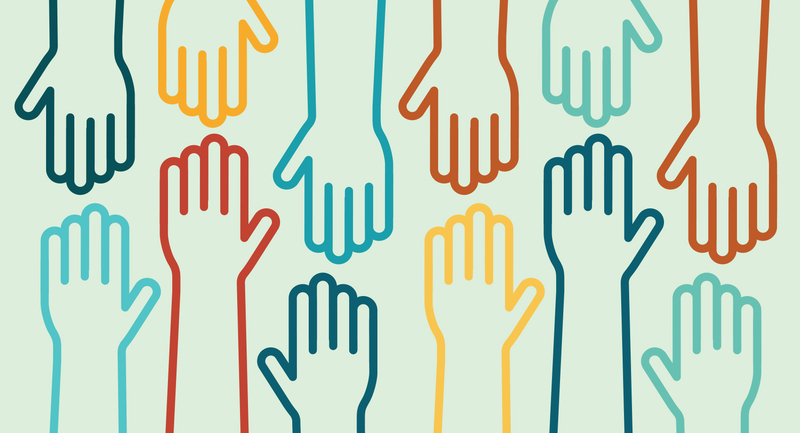In times of collective trauma, such as the global pandemic the world is currently experiencing, many students will exhibit symptoms of chronic stress—misdirected anger, a lack of confidence, and disengagement from school. At the same time, many teachers are not trained with tools and strategies to help their students deal with this stress and trauma. The unintended consequence is that students are not able to learn because it is difficult for them to focus.
To manage chronic stress and emotions, yoga and mindfulness tools offer evidence-based strategies that students can use to regulate their emotions and stay in a learning-ready state. Schools that partner with Youth Yoga Project have found that when mindfulness becomes a regular part of the school day, there is a significant shift in the school culture, creating positive outcomes for all students. When students learn strategies for self-regulation, discipline rates go down.
Yoga and mindfulness strategies work because they meet what Bruce Perry calls the "6 R's" to heal trauma (2002):
- Relational: When teachers acknowledge students' emotions and provide tools to manage them, students feel safe.
- Relevant: Yoga and mindfulness offer helpful coping strategies students can use in and out of school.
- Repetitive: You can use breathing and movement strategies over and over.
- Rewarding: Learning new strategies helps elevate a student's mood and makes them feel proud.
- Rhythmic: Breathing and movement have natural patterns. When you stop and take a deep breath, you are following the pattern inhale, exhale.
- Respectful: Yoga and mindfulness regulate students' minds and bodies, so they are able to thoughtfully respond to others and make respectful choices.
Yoga and mindfulness teach students bottom-up regulation, which means they help students regulate their emotional brain through rhythm, repetition, and movement.
Imagine a typical day at recess. When elementary school students are excited to go play, they often forget to tie their shoes before they run to get in line. Within seconds, a student falls and scrapes her knees and begins to cry. A teacher who uses mindfulness and yoga strategies in a trauma-informed way knows she has to help the student calm her emotional brain before talking to her about following the rules and tying her shoes.
The teacher asks the student to take five big belly breaths, allowing her to incorporate repetition (inhale, exhale, inhale, exhale) and receive the calming benefits of deep breathing. The teacher observes the student's breathing and body language to decide when her emotional brain is calm and asks the student if she is OK. Then the teacher can initiate a conversation about the importance of tying shoes before going to recess. Since the student's emotional brain is calm, she can help problem-solve a plan to make sure her knees don't get skinned up again.
Yoga and Mindfulness Strategies
A classroom teacher can use yoga and mindfulness strategies to support students throughout the entire school day. These strategies can be taught in a 15-minute mini-lesson on the first day of the week and practiced throughout the rest of week during specific times. (Note: Though these strategies are put in a classroom context, they can be tailored to meet students' current needs in a digital environment.
Belly Breaths: When students feel strong emotions, tell them they can take belly breaths to feel better. Students breathe in slowly through their nose, letting the air in deeply toward their lower belly, then breathe out through their mouth, exhaling slowly.
How to incorporate: Use belly breaths to transition for one activity to another. (This is a lifelong skill that can used anywhere—all students need is their breath.)
Half-Sun Sequence: This is a quick and easy way to move the body within a classroom setting. To complete a half-sun sequence, stand up with your feet slightly apart and parallel. Breathe in and lift your arms overhead in wide arcs. Breathe out, fold forward, and dangle your arms down toward the floor. Breathe in and lift your arms overhead in wide arcs again. Breathe out, bring your arms back down to your sides, and stand up tall.
How to incorporate: Use a half-sun sequence before assessments or high-stakes testing.
Or, set up a calm-down area and teach students how to use sun sequence and belly breathing to regulate their emotions.
Guided Relaxation: Lead students through relaxation by reading them guided imagery scripts to focus their attention on creating calm, peaceful mental images. Choose scripts that help students focus on the present moment and expand their imagination. Some of my favorites tell students to pretend they can fly and travel to their favorite place or help them build a tree house.
How to incorporate: Use guided relaxation to refocus for a few minutes after lunch or recess.
Yoga and mindfulness strategies offer simple, cost-effective solutions for supporting students. Once students learn these yoga tools themselves, they can use them for a lifetime to combat the negative impacts of chronic stress. All you need is body, mind, and breath.







